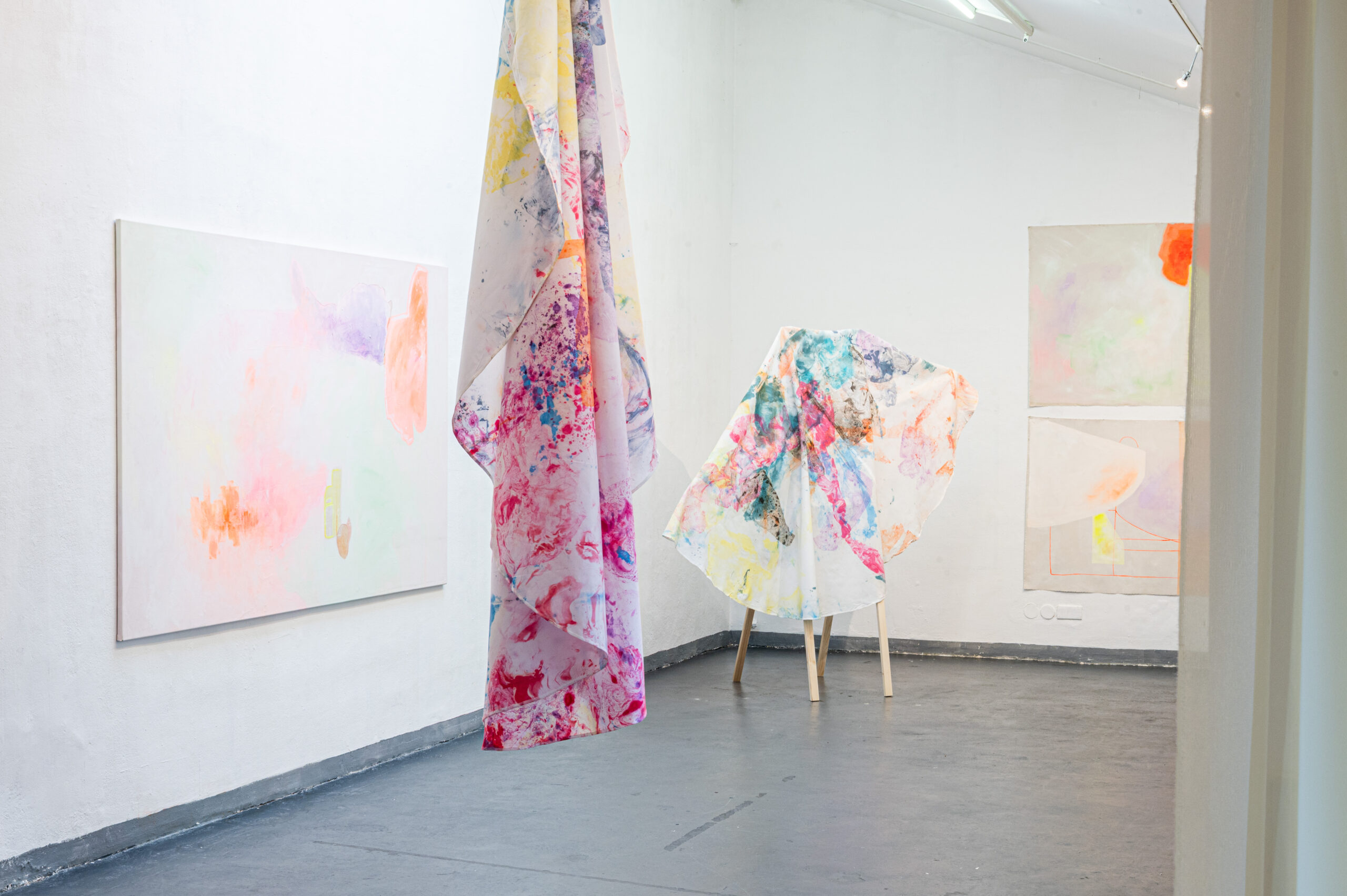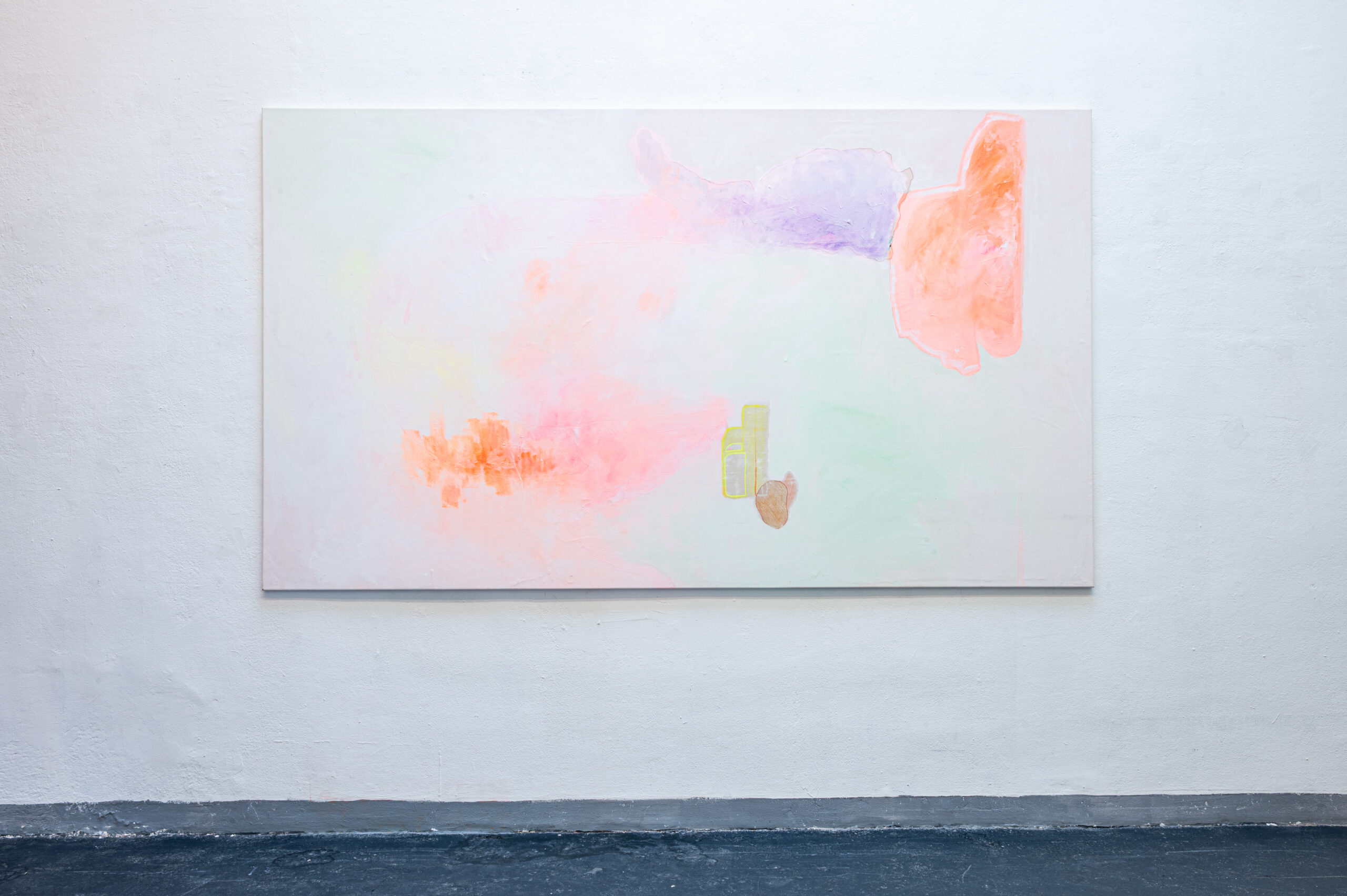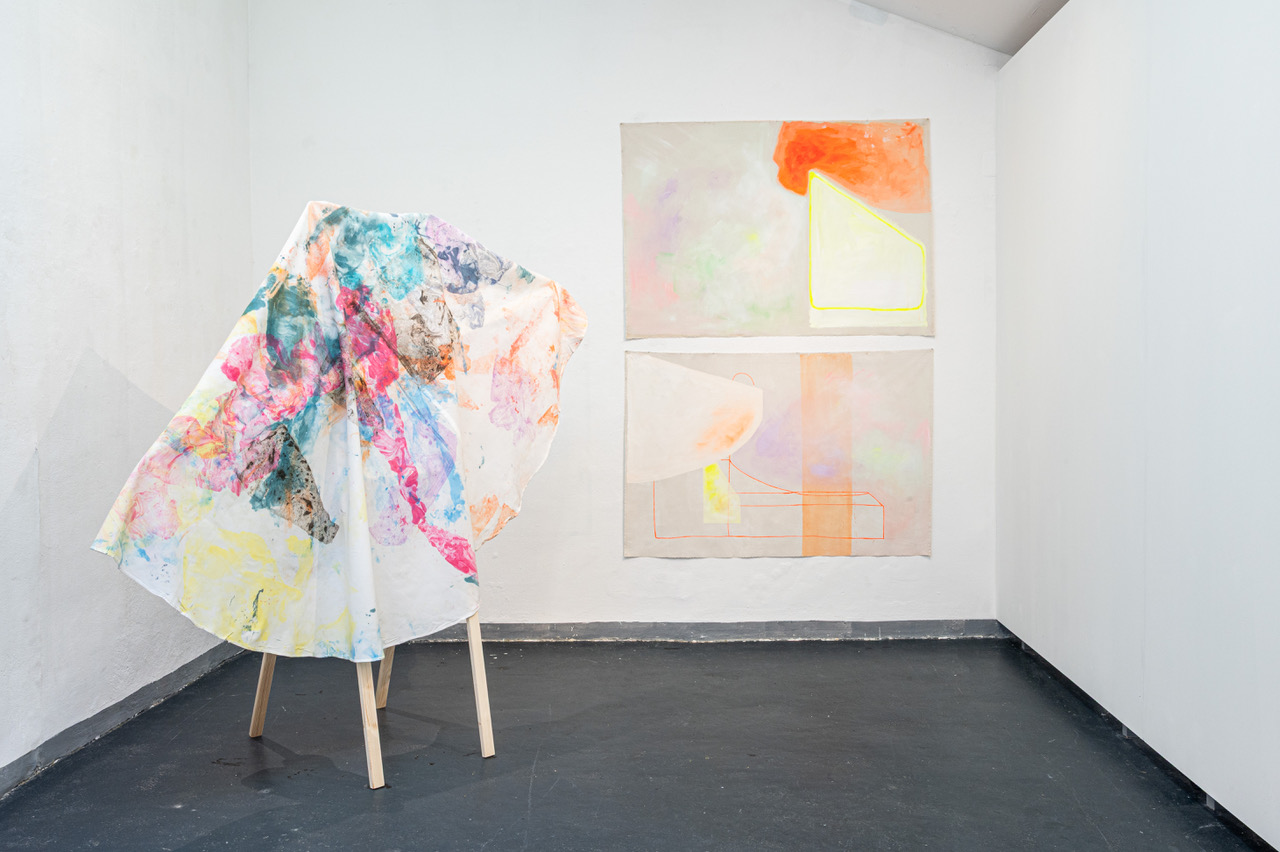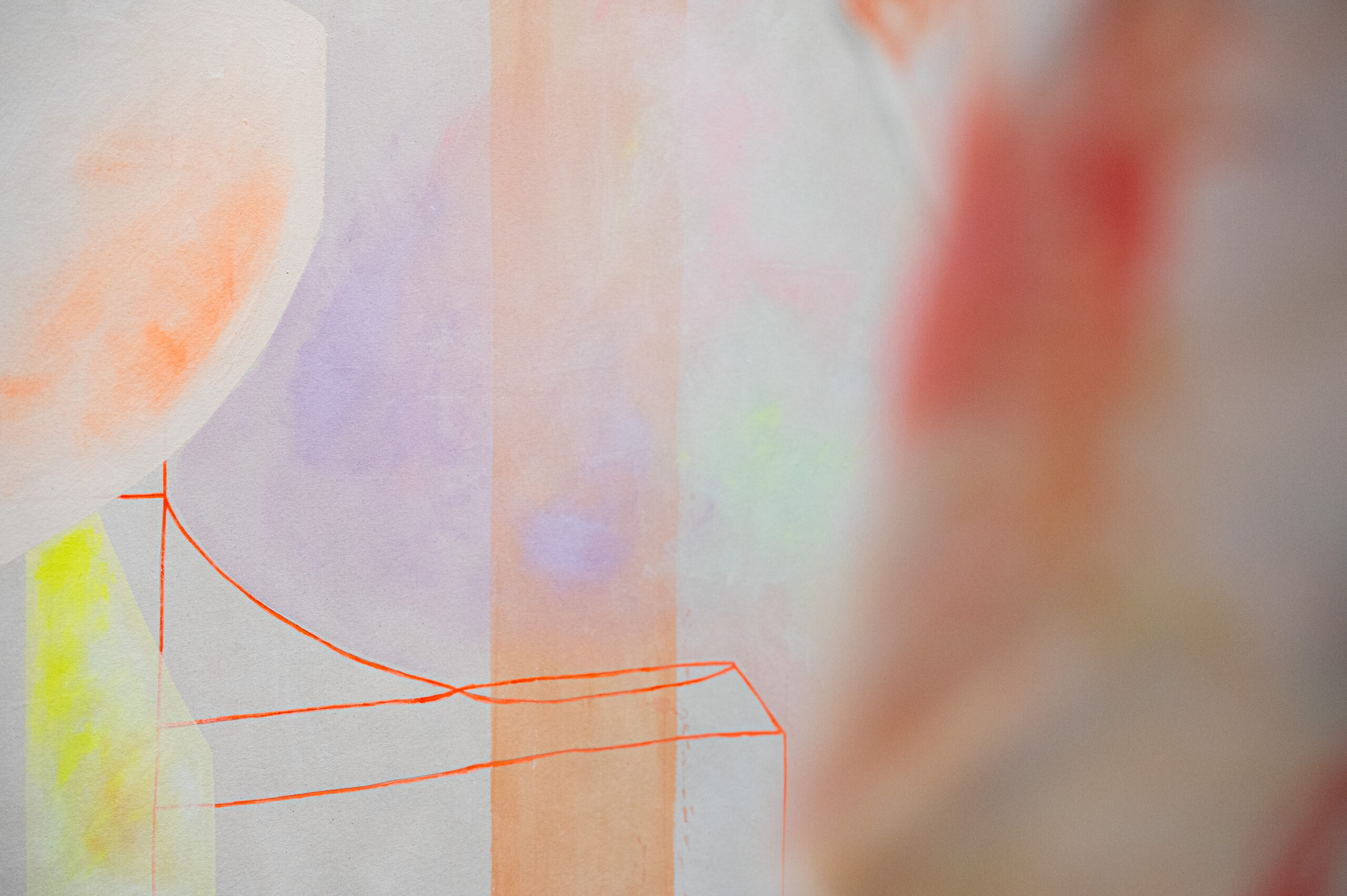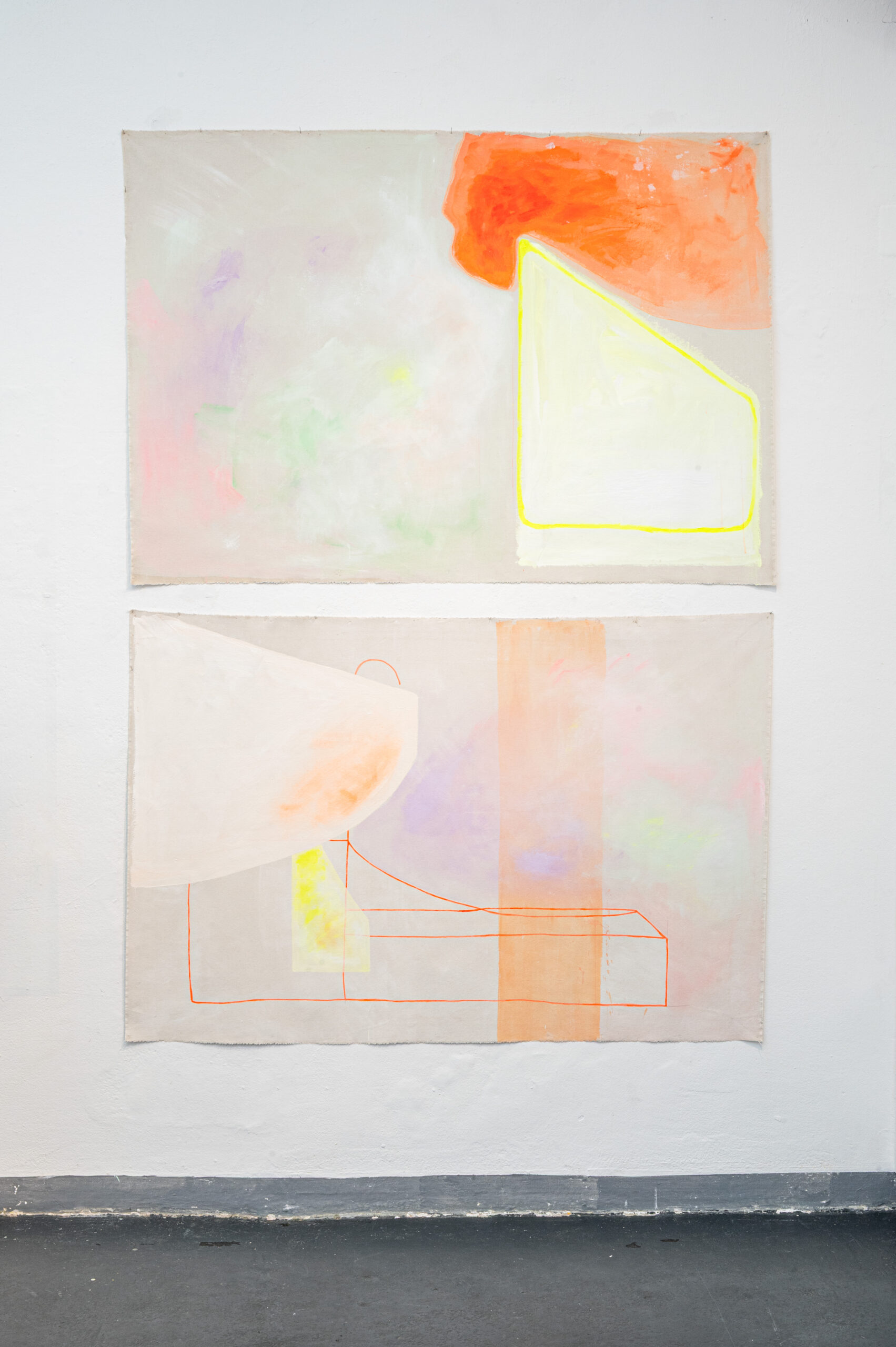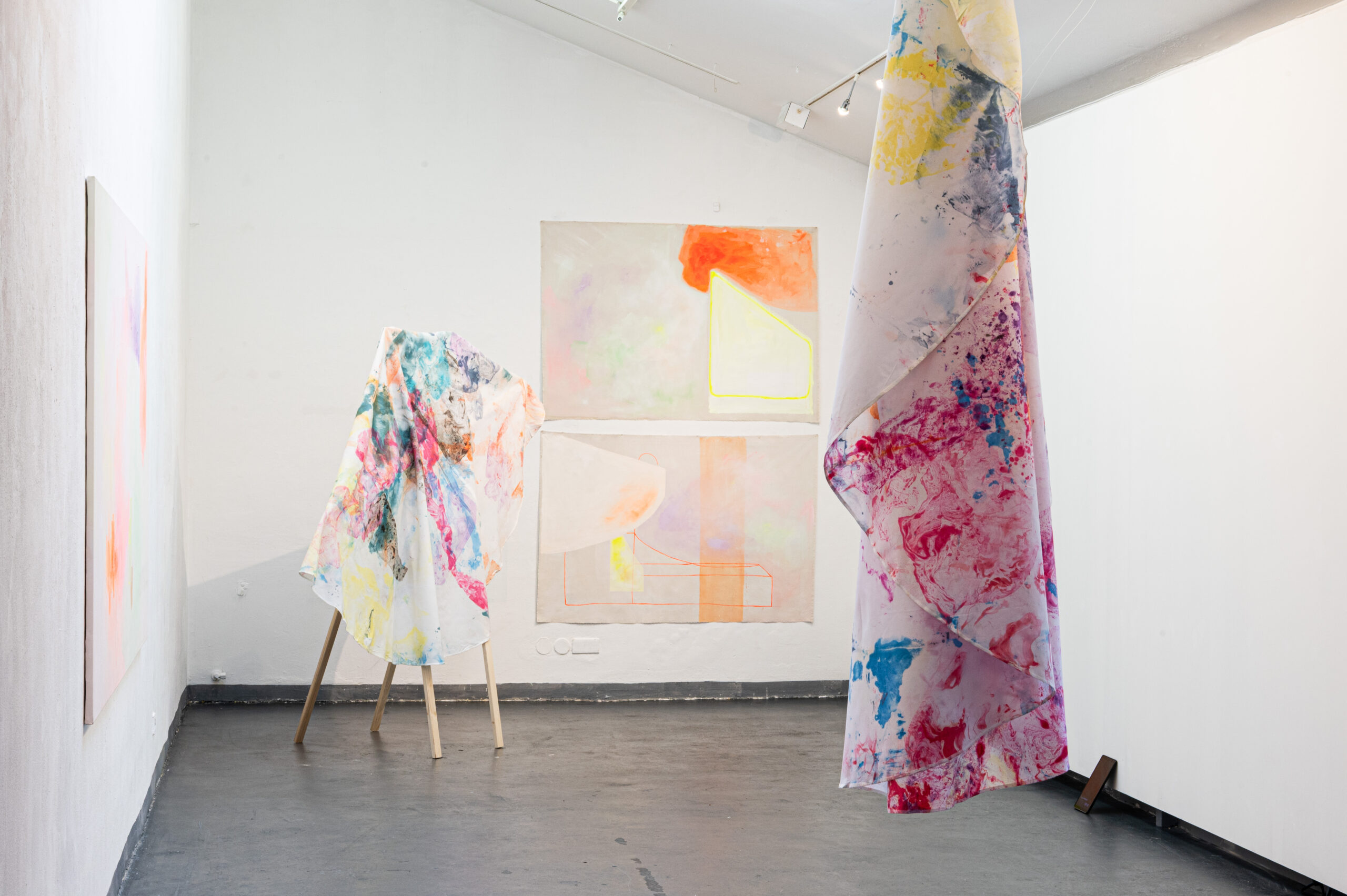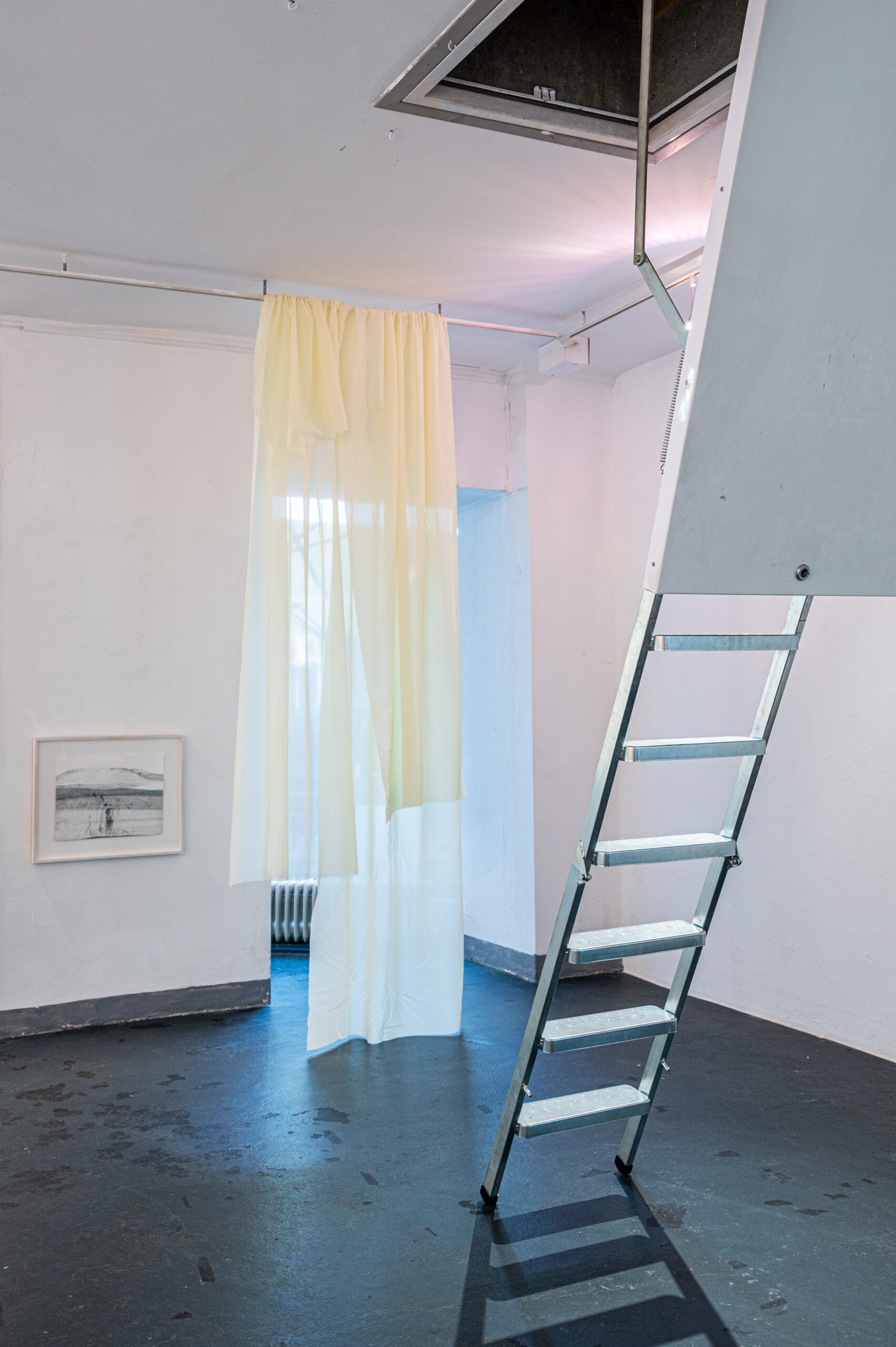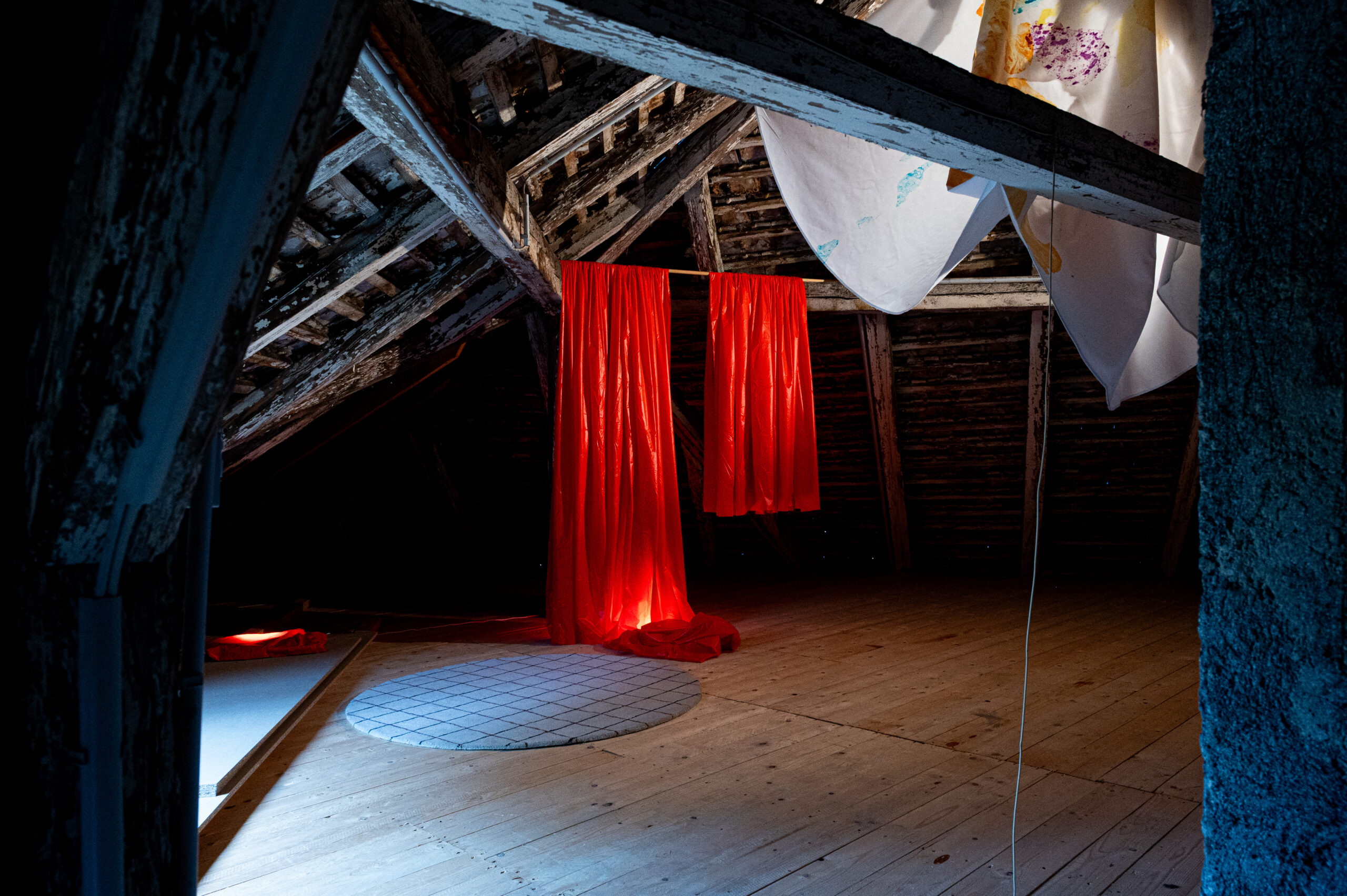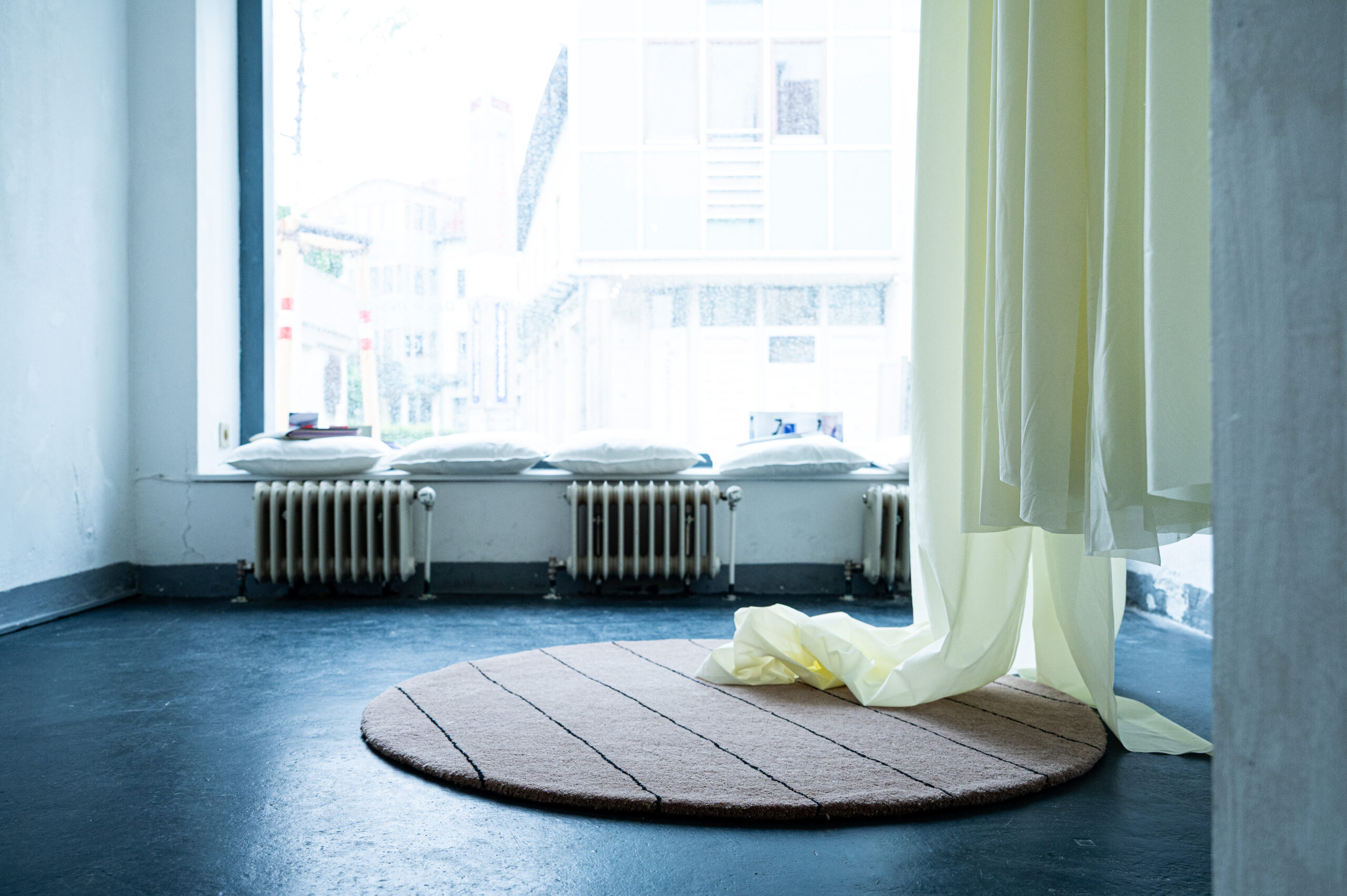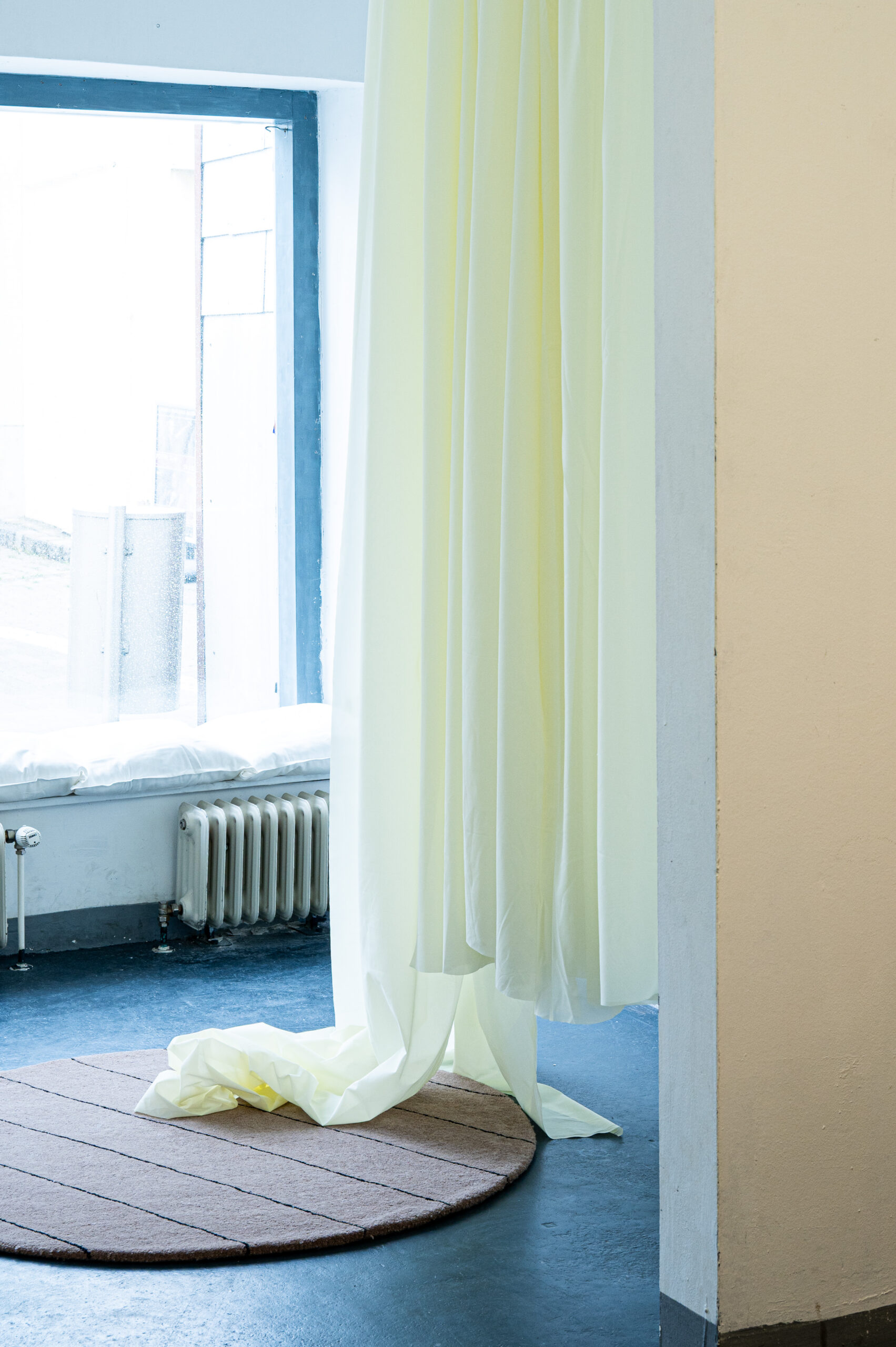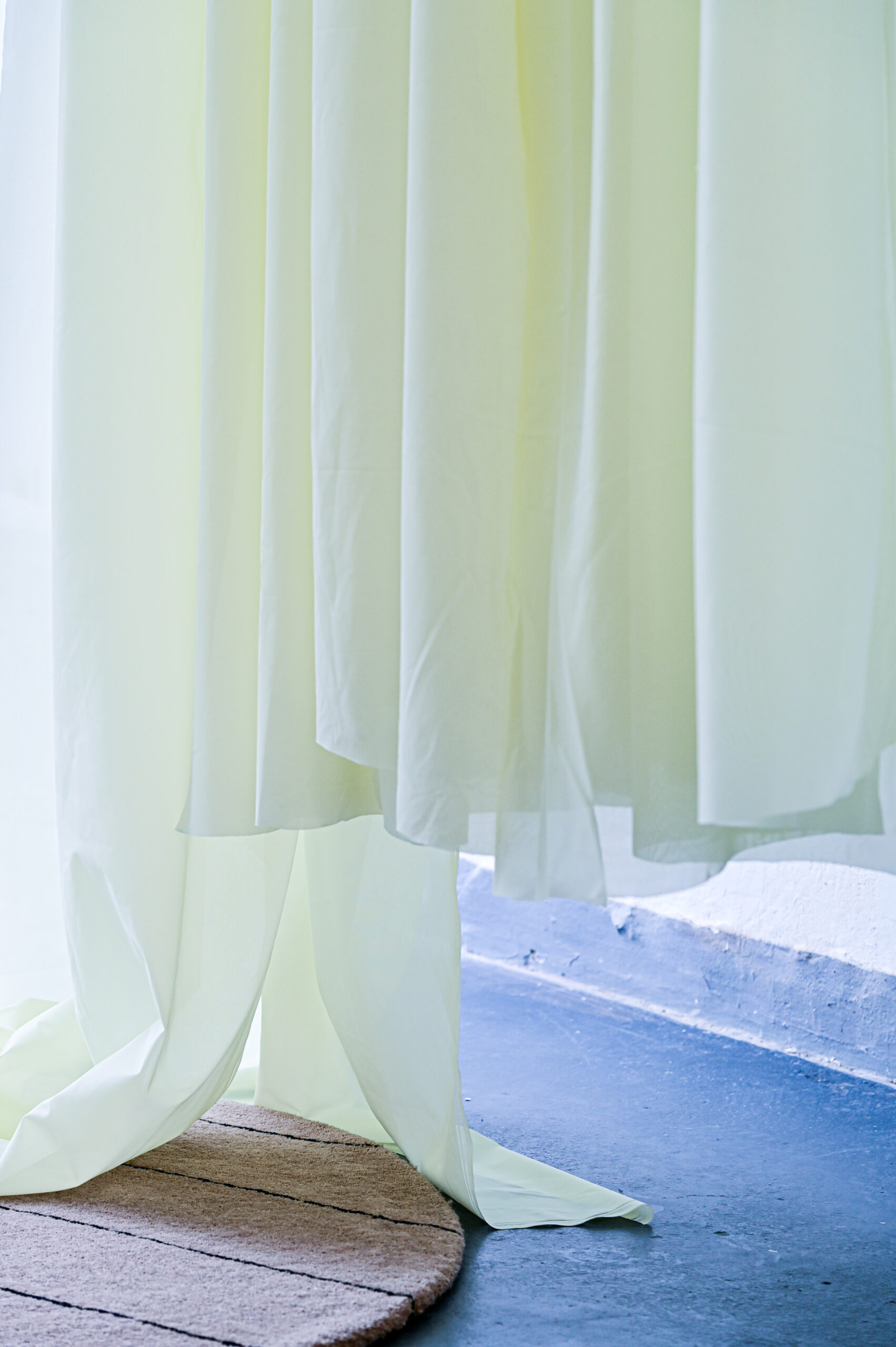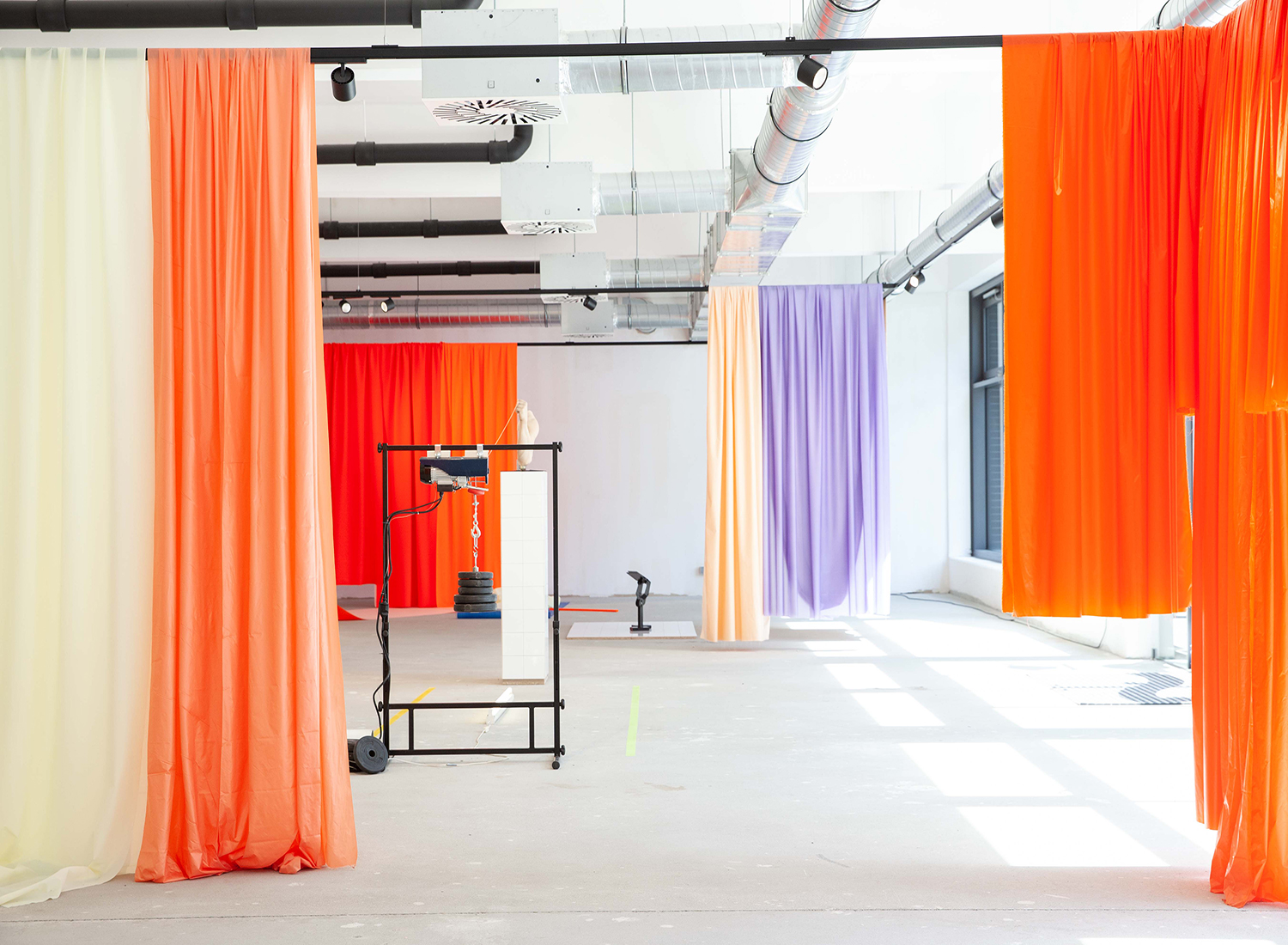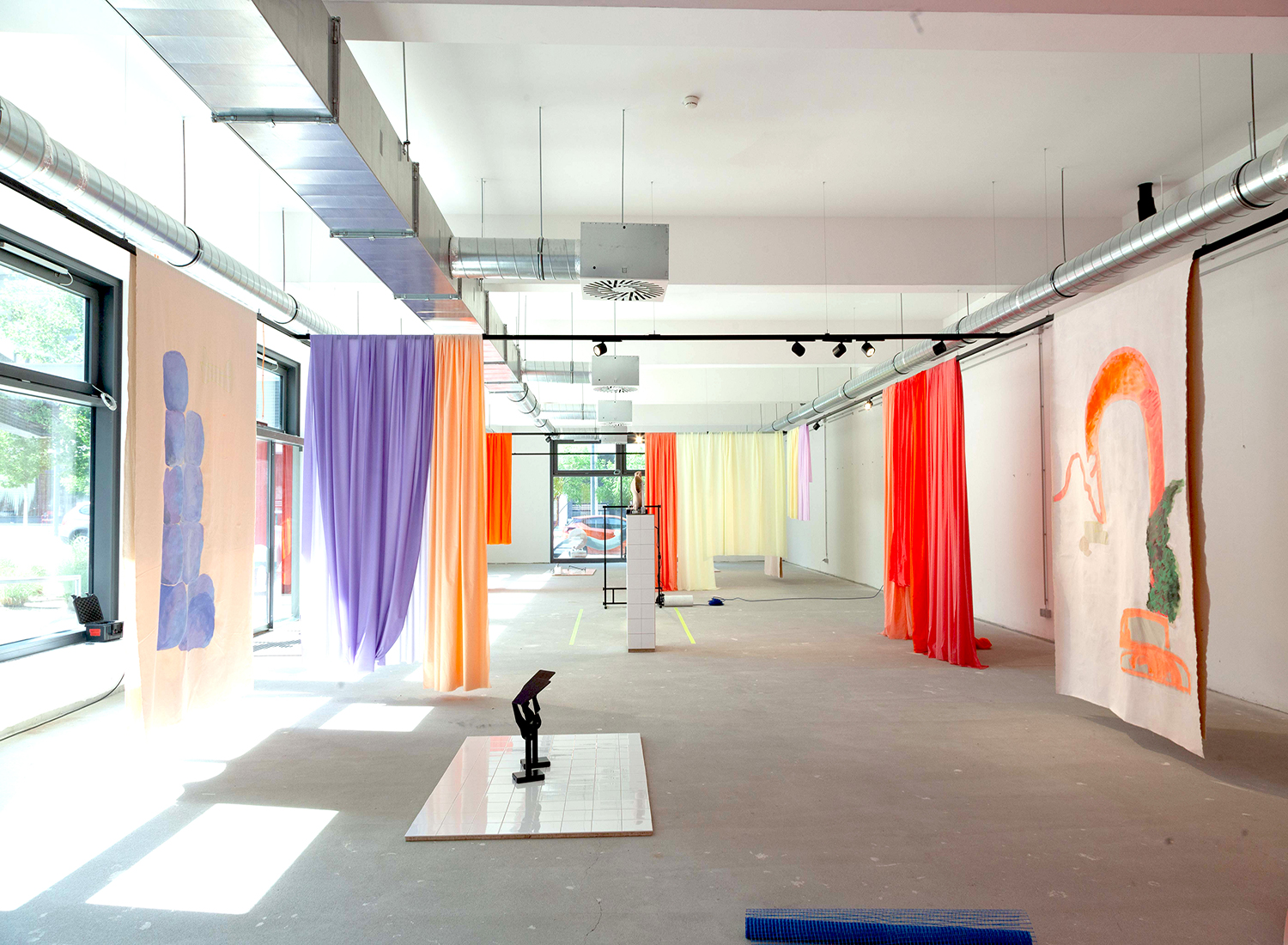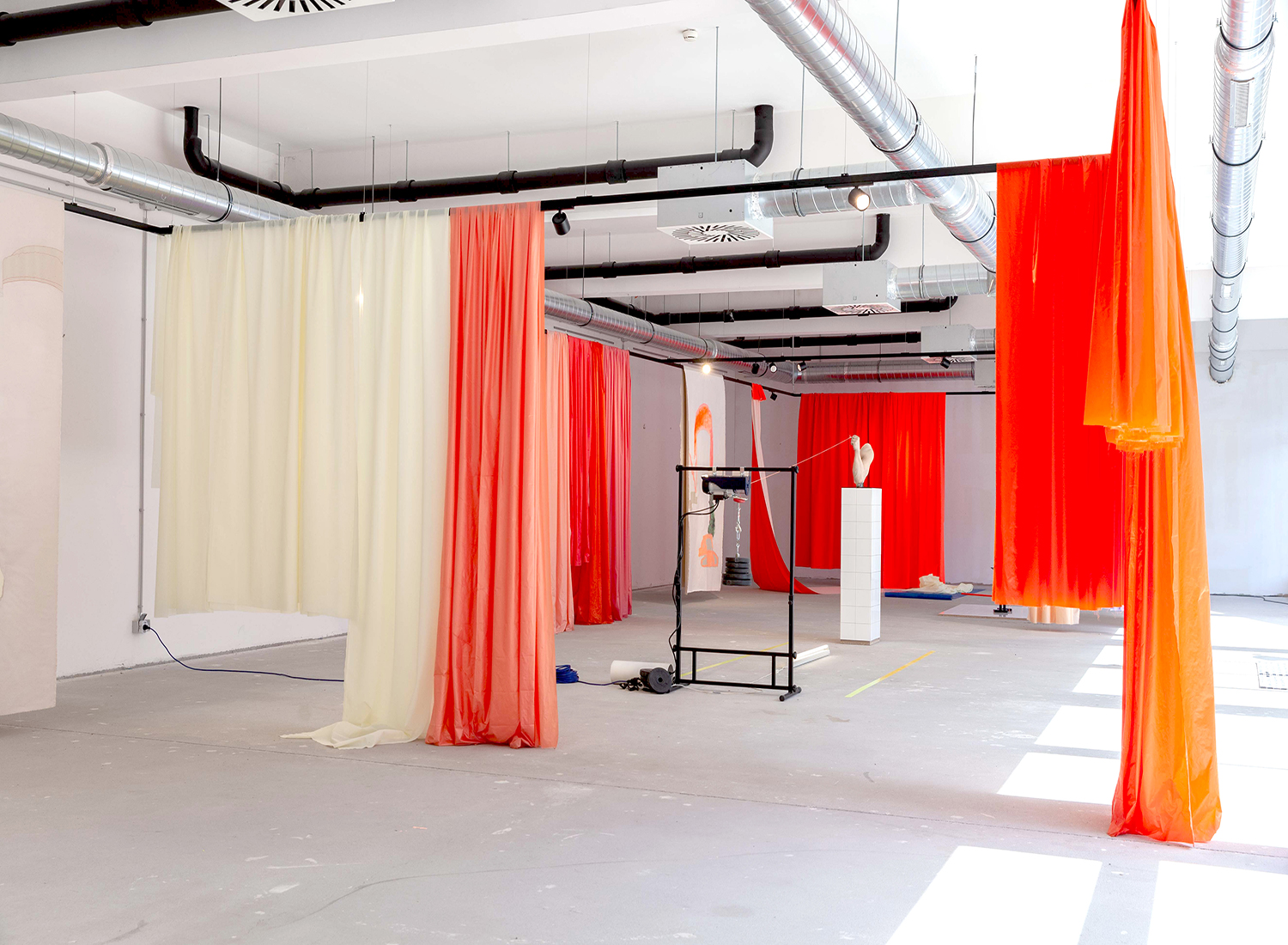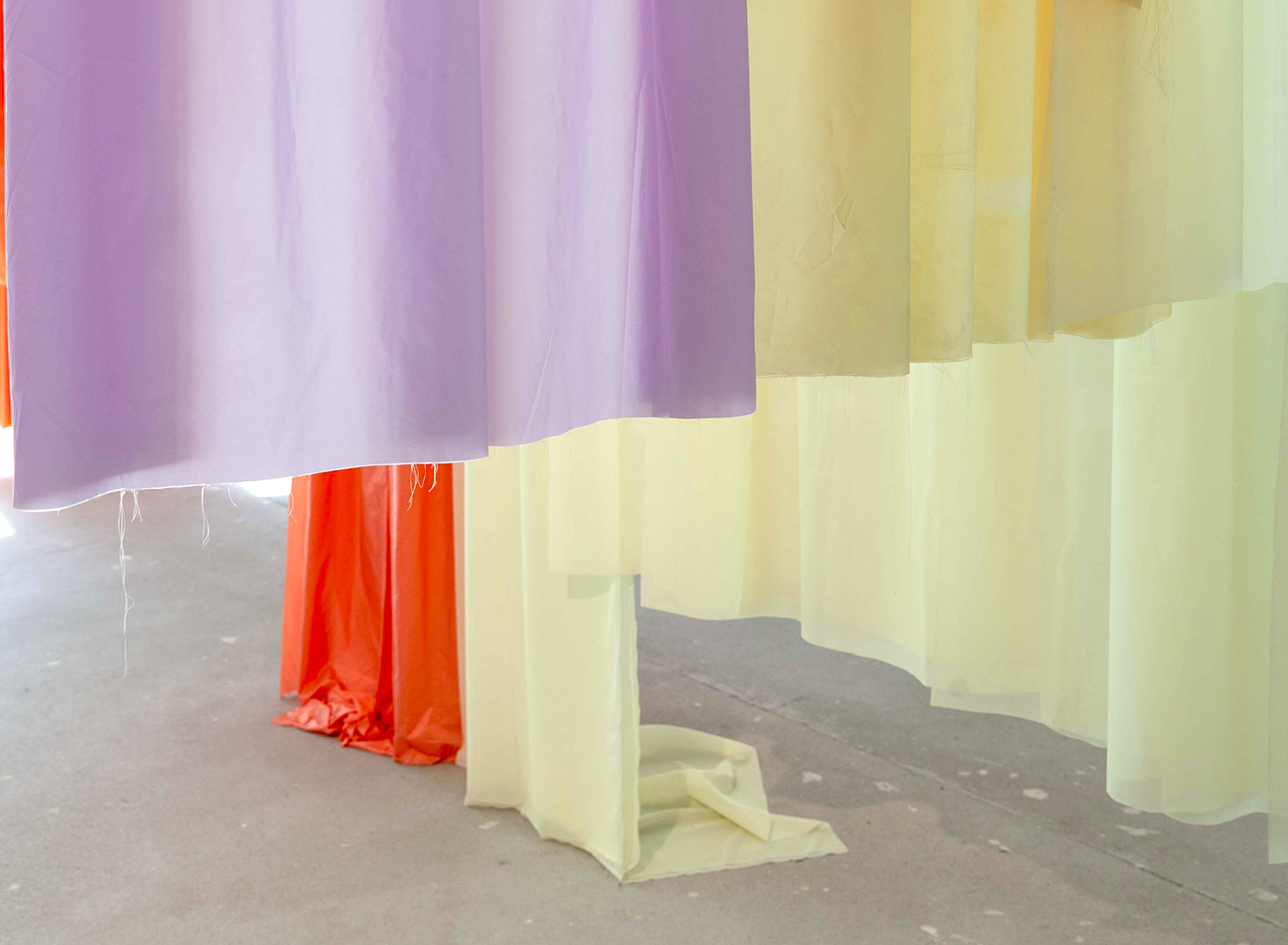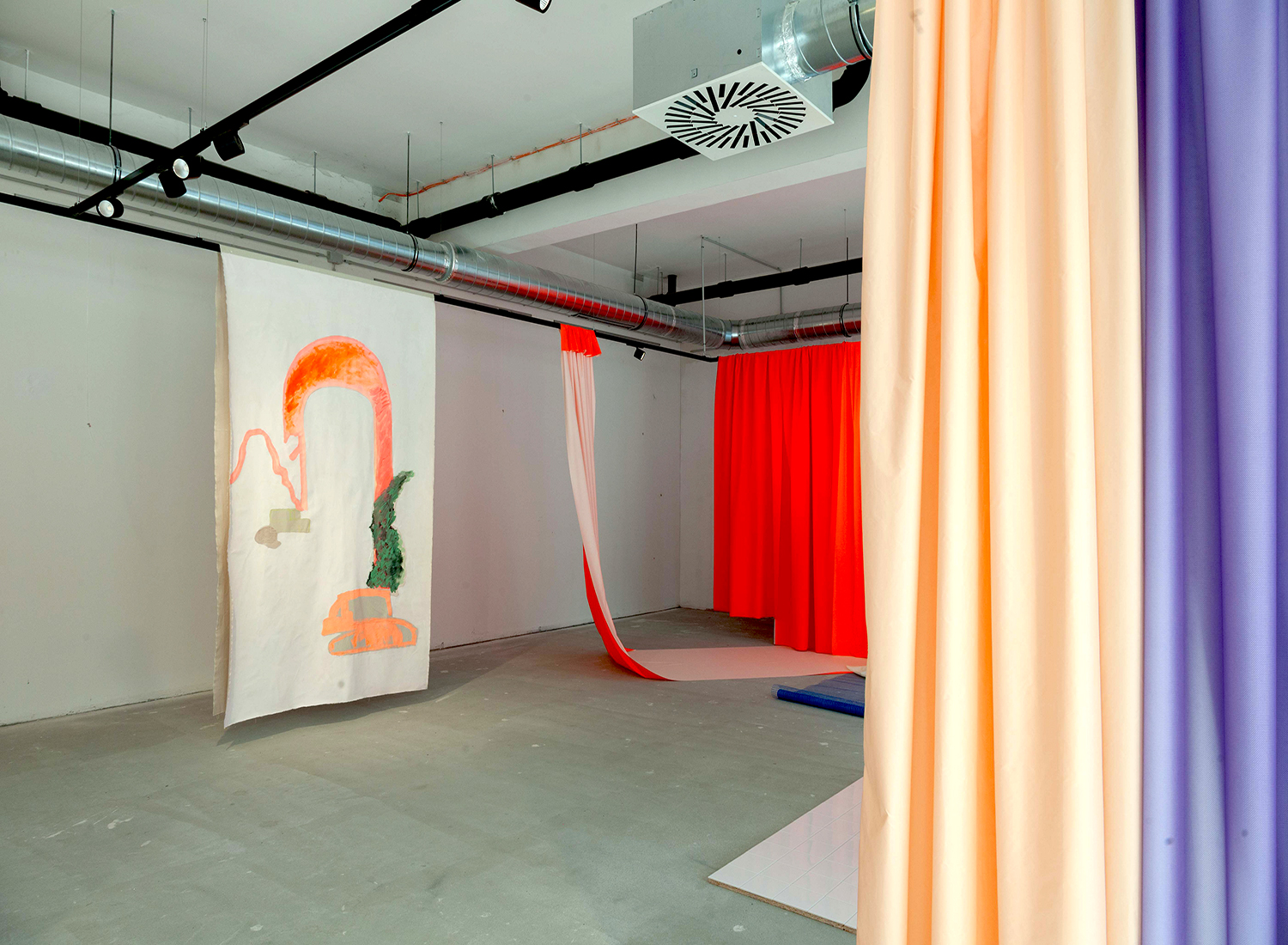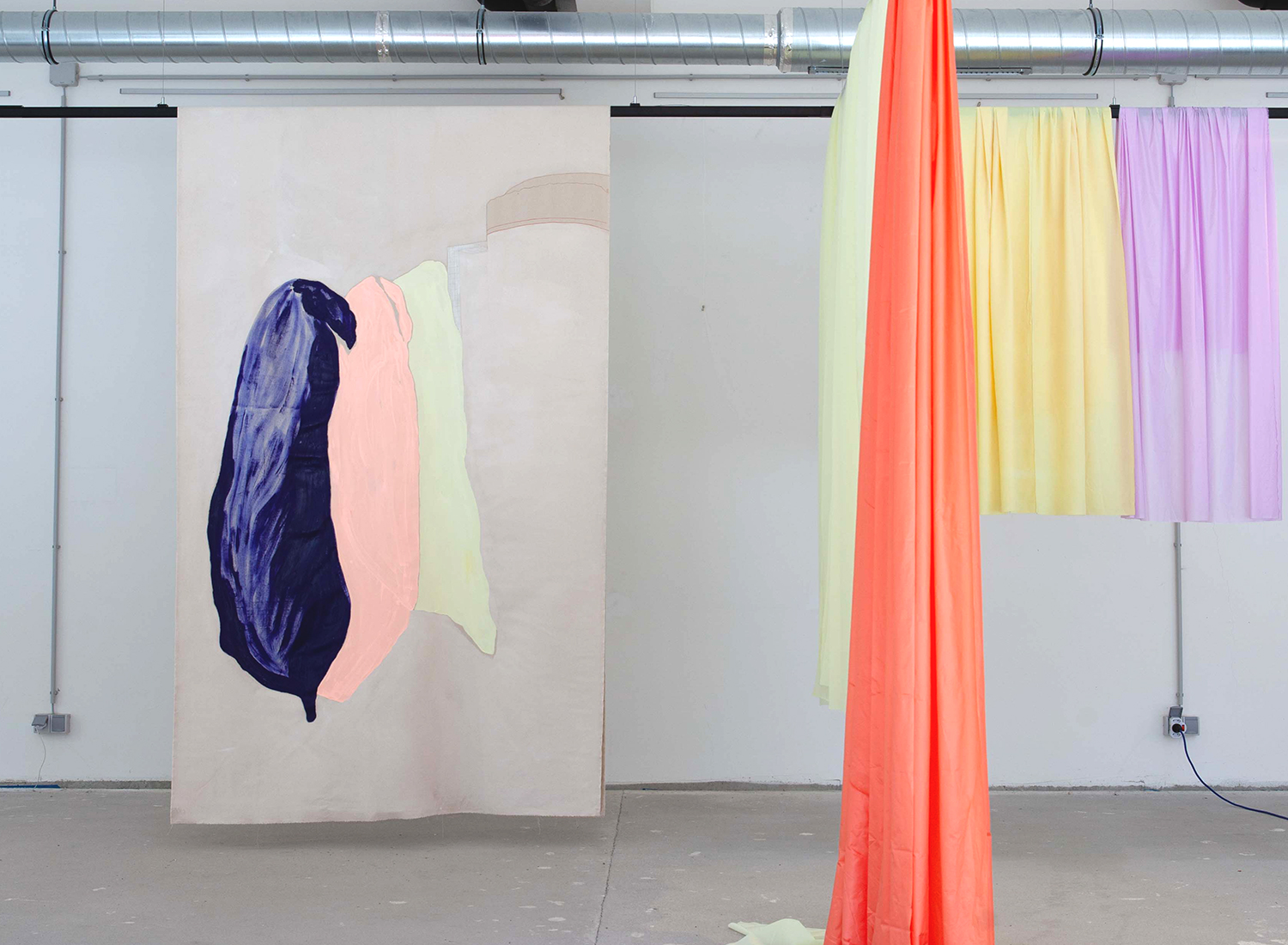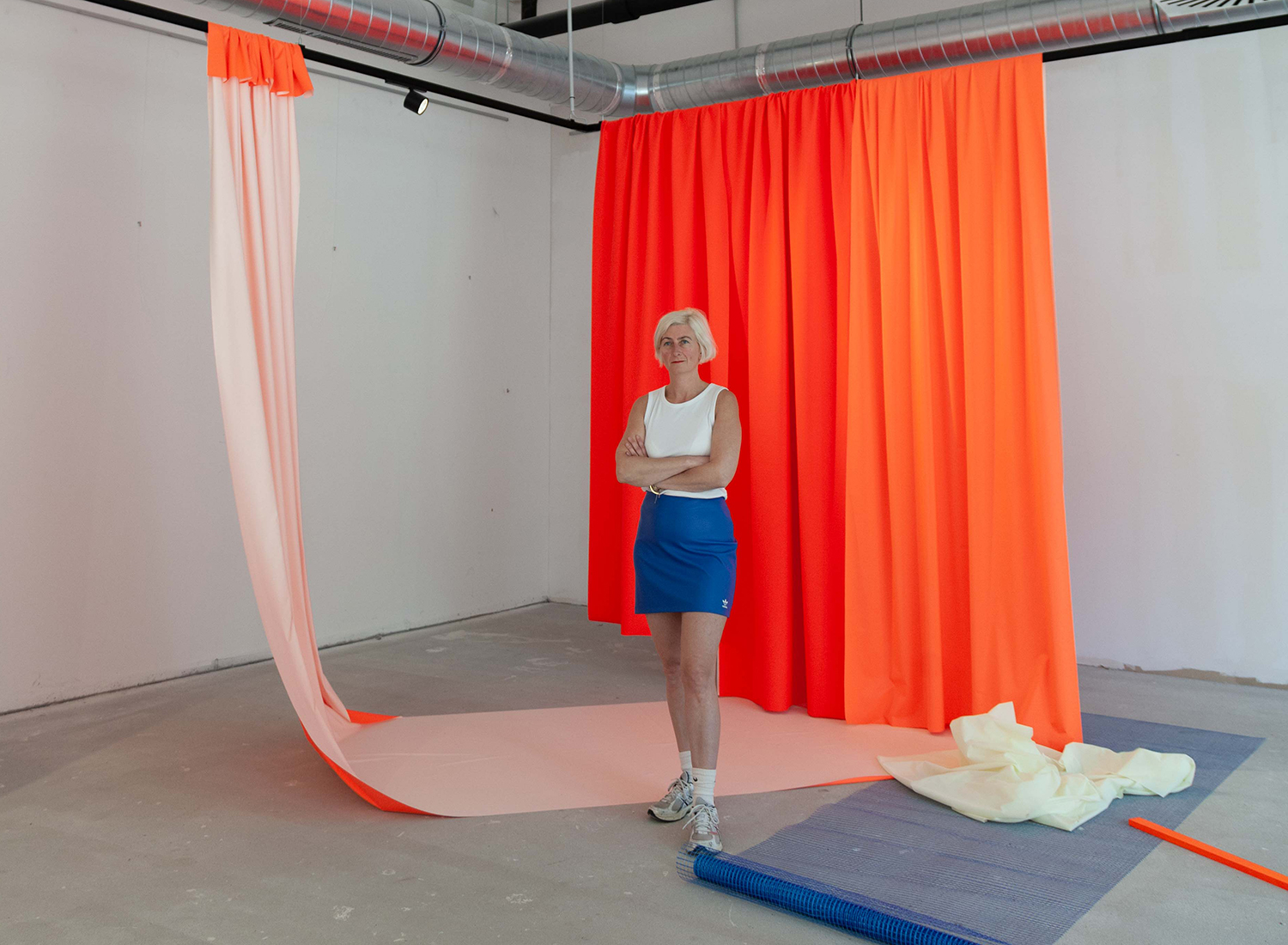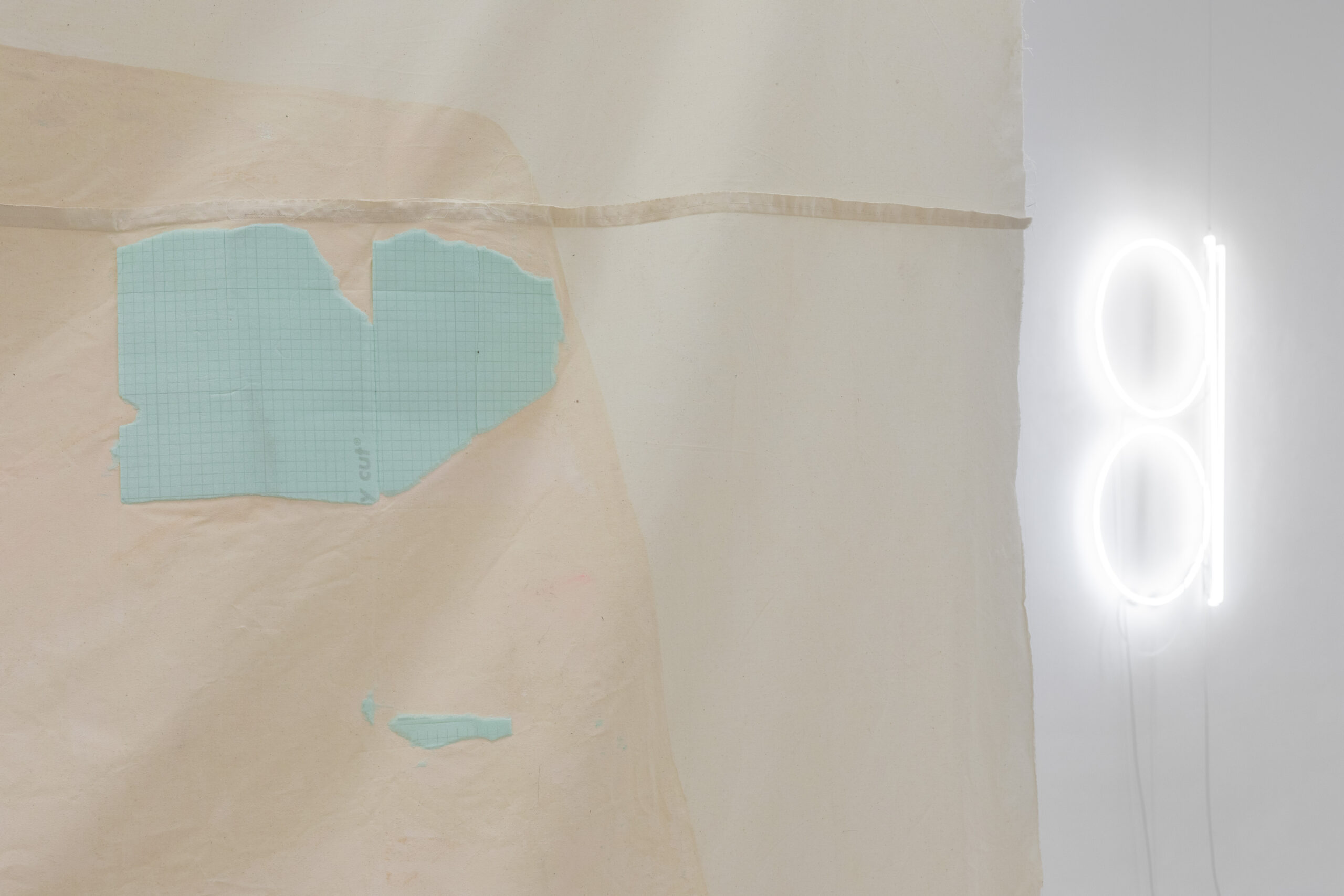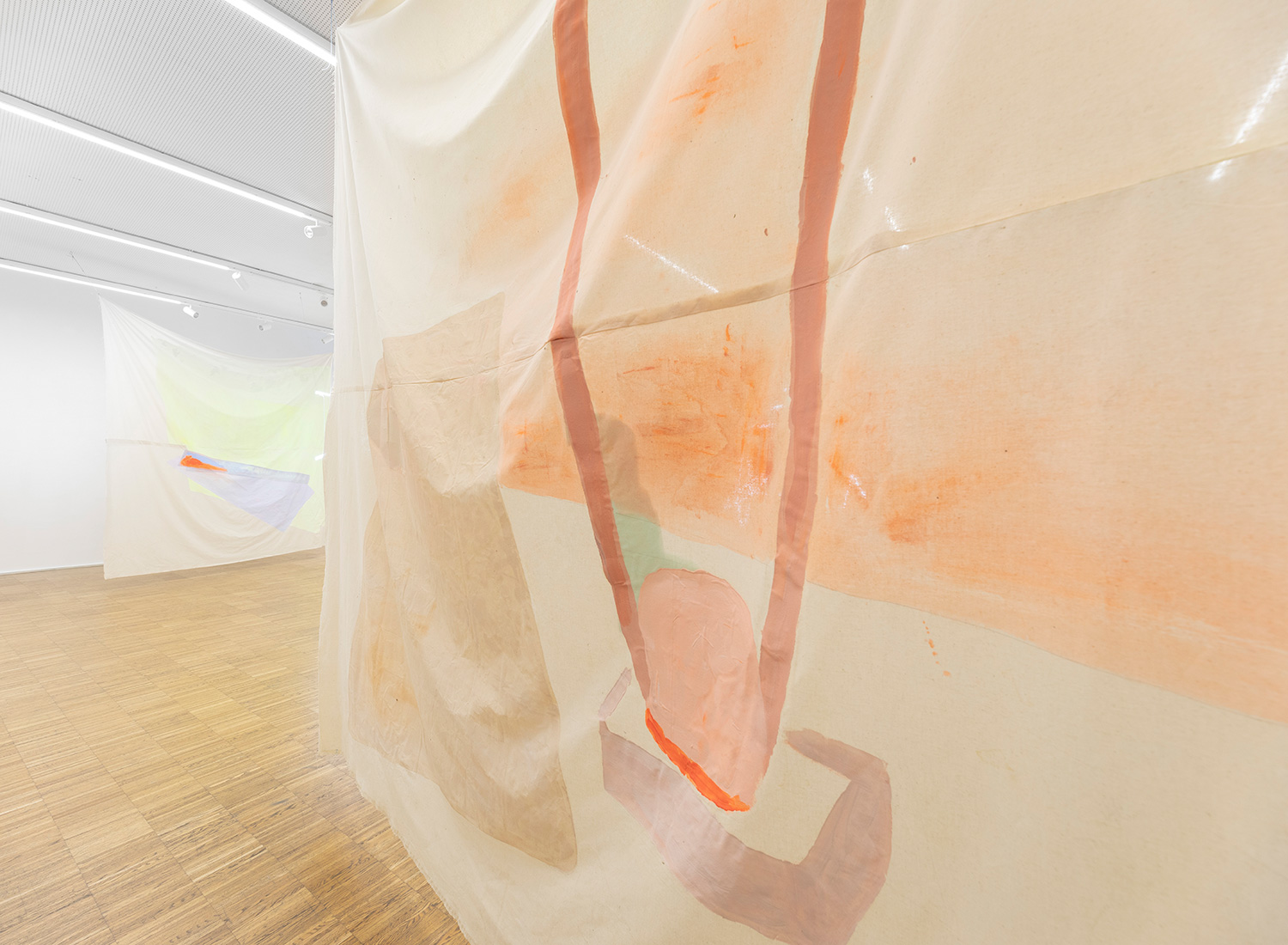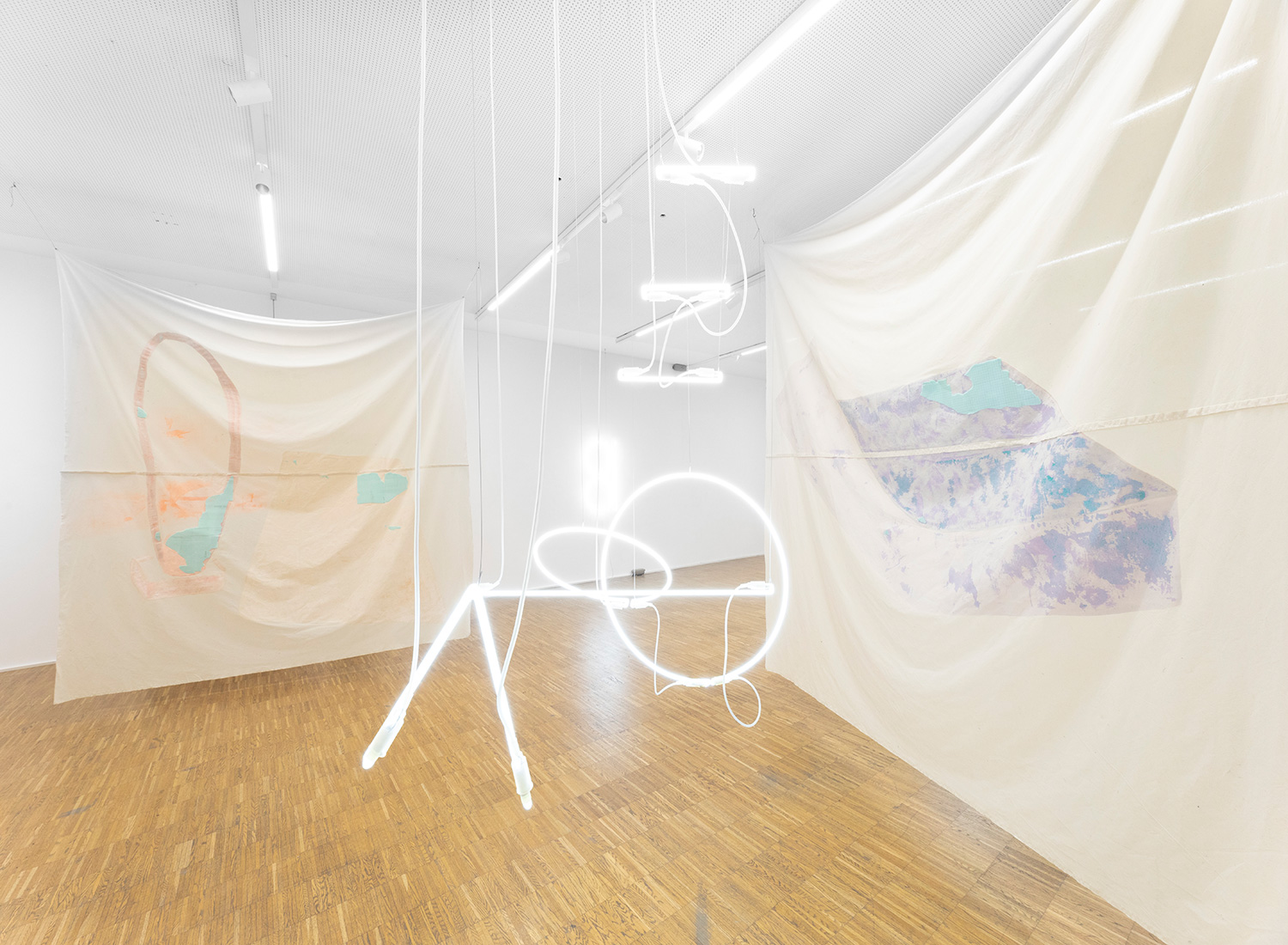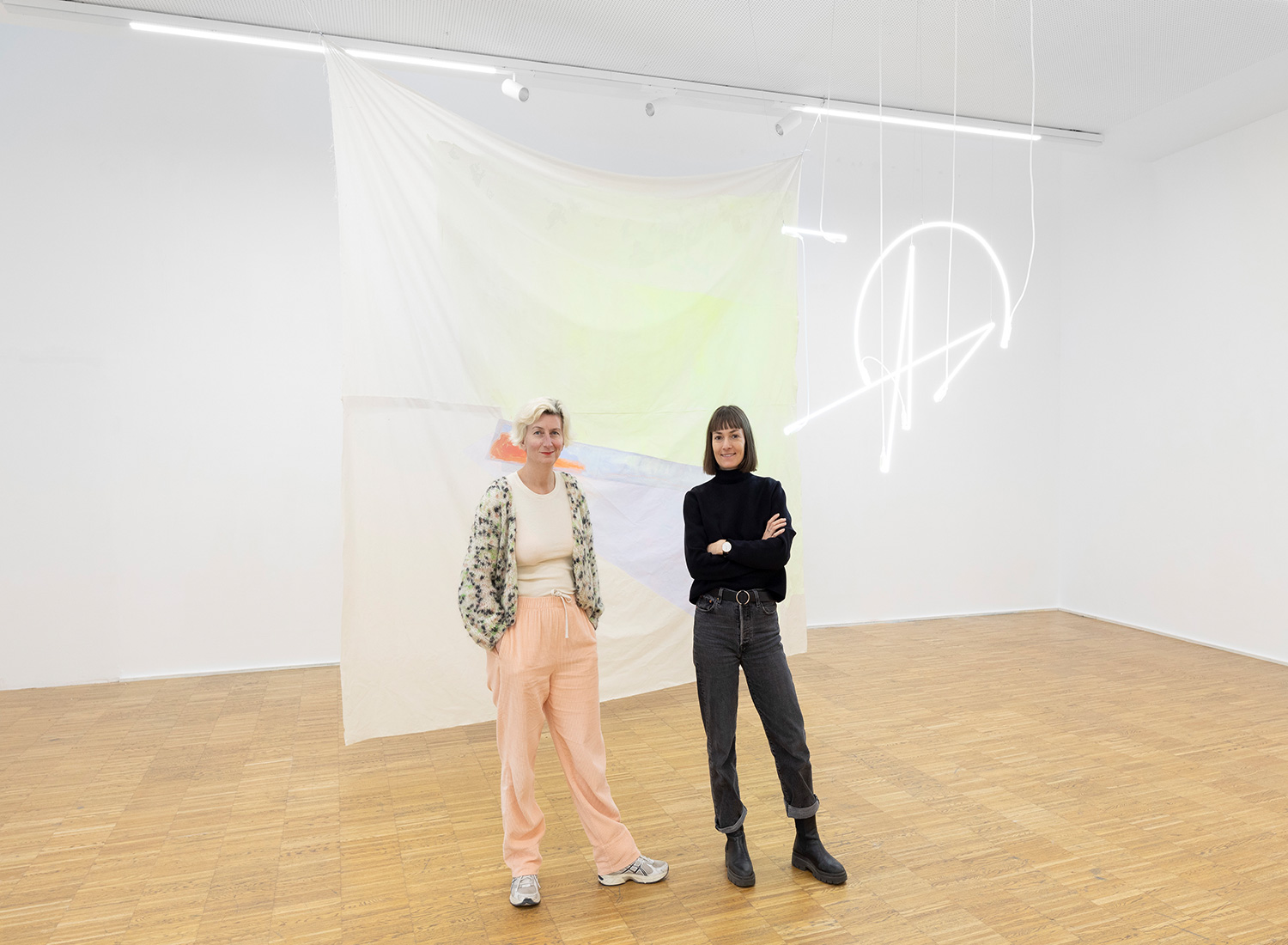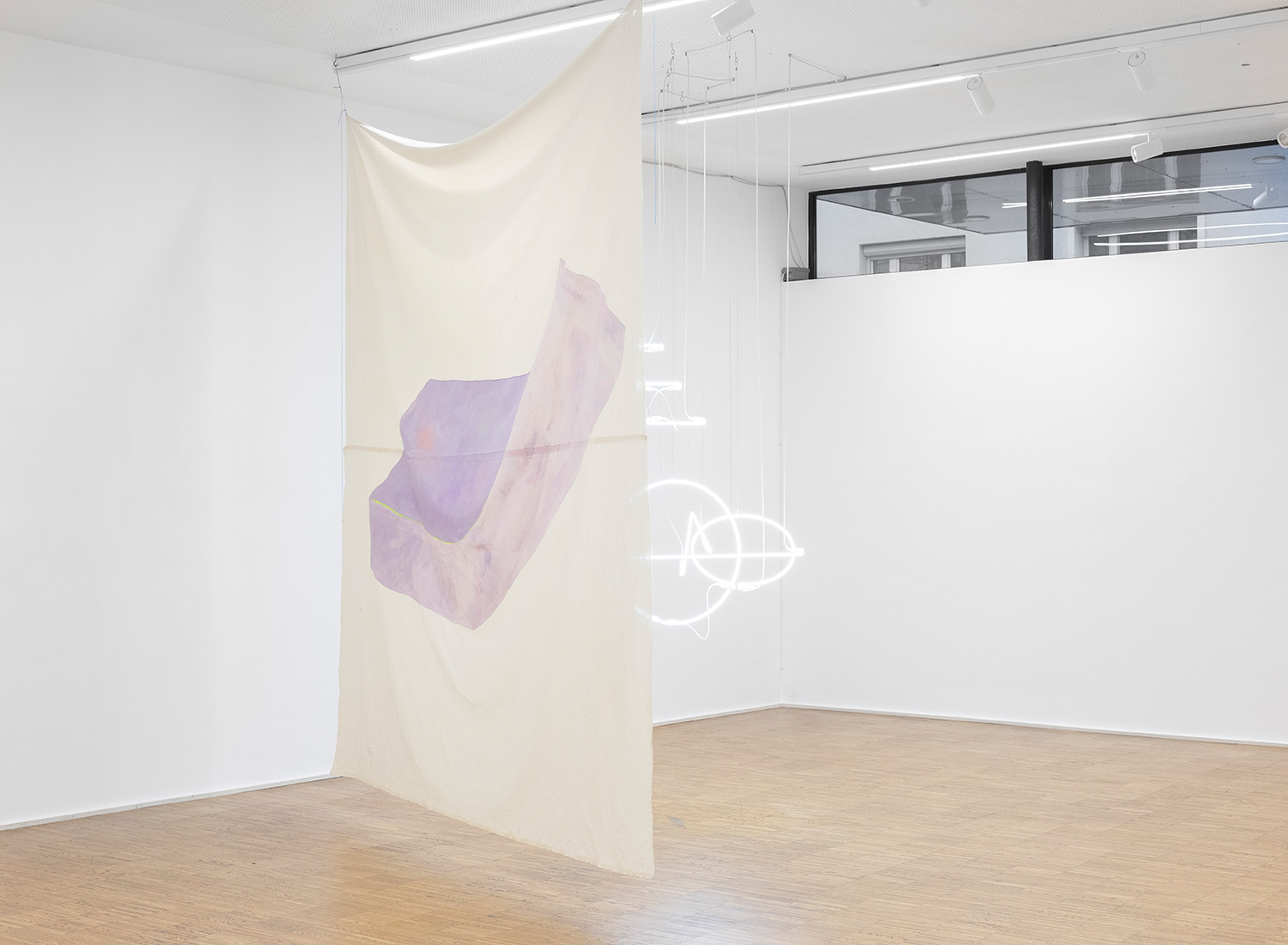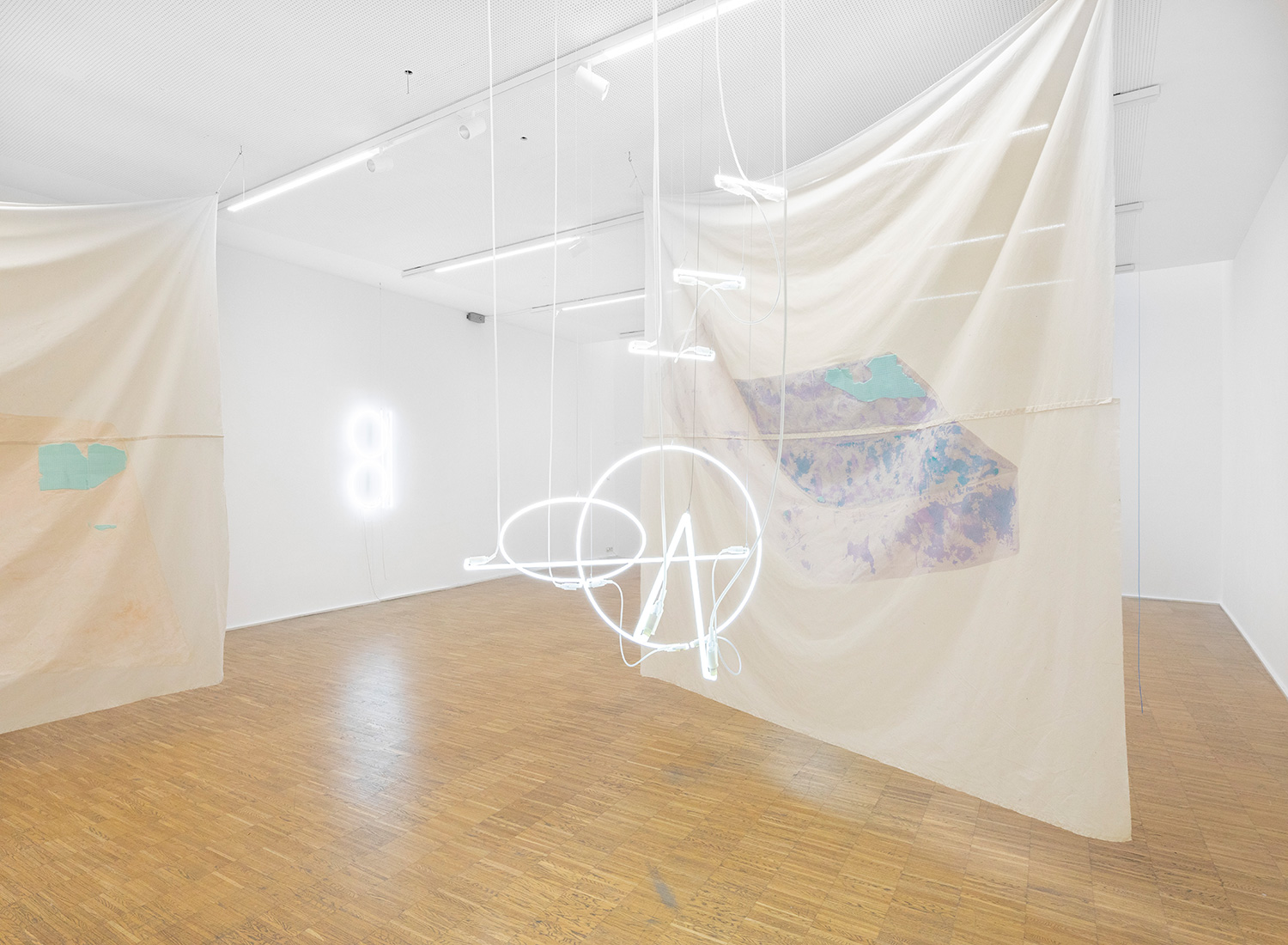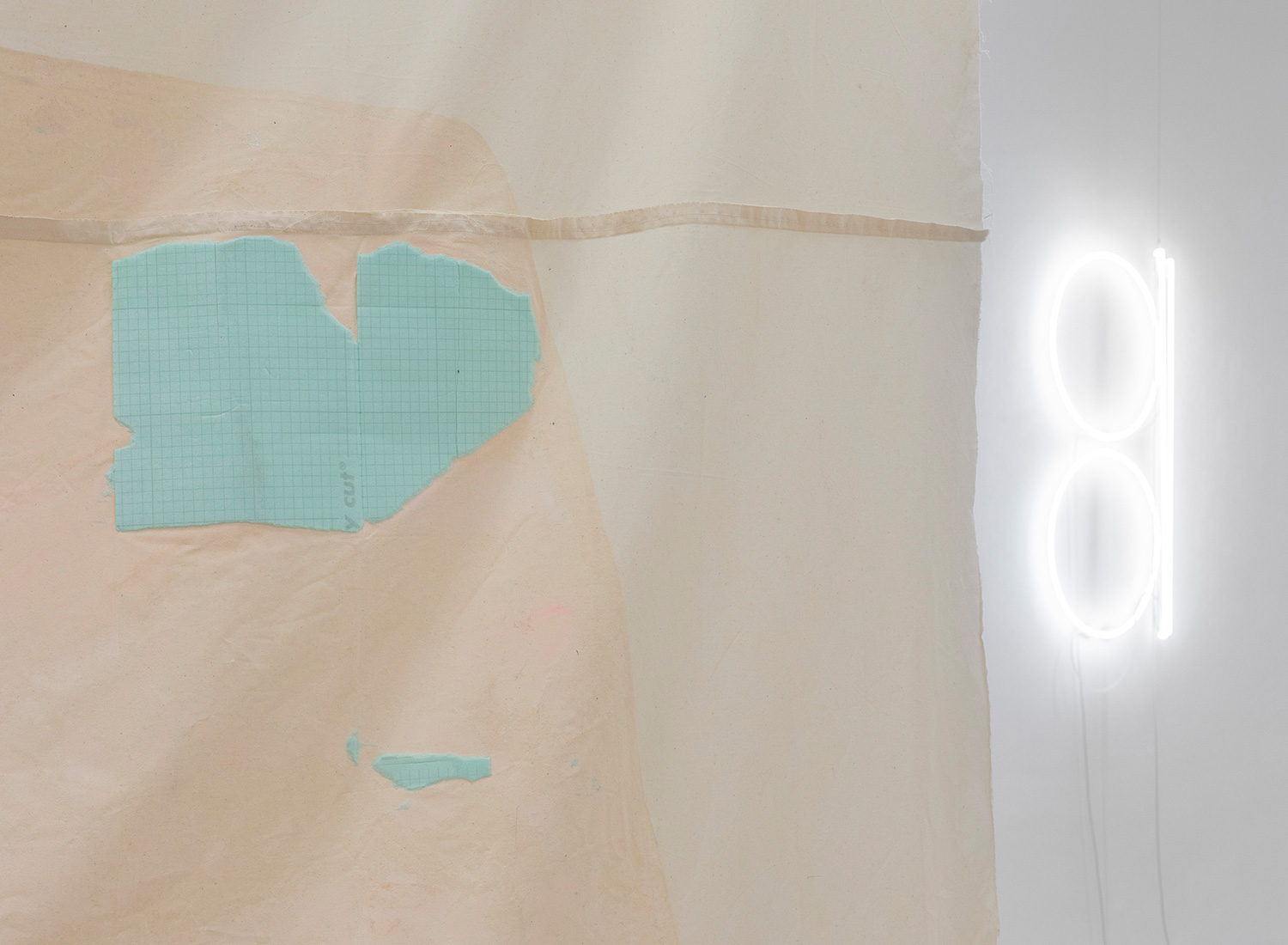MATCH: DEEP INSIDE
Fotocredits: Michael Kofler, Bildrecht, 2024
MATCH:DEEP INSIDE, curated by Katja Stecher, Kunstverein Baden, AT, 2024
In dieser gemeinschaftlich entwickelten Präsentation wird der Ausstellungsraum zur Kommunikationsplattform: Petra Gell und Tanja Hehmann schreiben sich in die Architektur ein, durchdringen und transformieren sie. Ihre ortsspezifischen Eingriffe und Installationen sind das Ergebnis eines intensiven Dialogs, in dem die eigene Position als Frau und Künstlerin ebenso zur Disposition steht, wie das Verhältnis zueinander. Ein MATCH: DEEP INSIDE entwickelt sich im Kunstverein Baden.
Petra Gell
arbeitet im Bereich Malerei und Installation, die sie zumeist ortsspezifisch entwickelt. In ihren Ausstellungen führt sie einen interdisziplinären, gesellschaftspolitischen Diskurs und berichtet im Blog matchpoint regelmäßig über ihre aktuellen Projekte.
Tanja Hehmann
Ihr Arbeitsschwerpunkt liegt auf der Malerei, umfasst aber auch Grafik und Installation. Ein experimenteller, forschender Umgang mit dem jeweiligen Medium geht mit themen- und ortsspezifischen Herangehensweisen zu Raum und Zeit, Anfang und Ende, Geburt und Tod, Eros und Thanatos einher.
https://www.kunstvereinbaden.at/ausstellung/match-deep-inside/
WHOAAOOO ein LIEBESBRIEF meiner Freundin Tanja aus Hamburg für MATCHPOINT. Zu unserer Ausstellung MATCH: Deep Inside im Kunstverein Baden, hat Tanja ihre Sicht auf unsere Zusammenarbeit, unseren Prozess geteilt. Wir haben uns über den Saloon einem internationalen Frauennetzwerk kennengelernt, Dank Franziska Storch einer Kunsthistorikerin, konnte ich eine Woche bei Tanja wohnen, ganz schön aufregend wenn man sich nicht kennt! What a Match!
https://www.matchpoint.or.at/post/what-a-match-deep-inside
Die Architektin und Künstlerin Hilke Ludwigs hat einen Text zur Ausstellung geschrieben!
